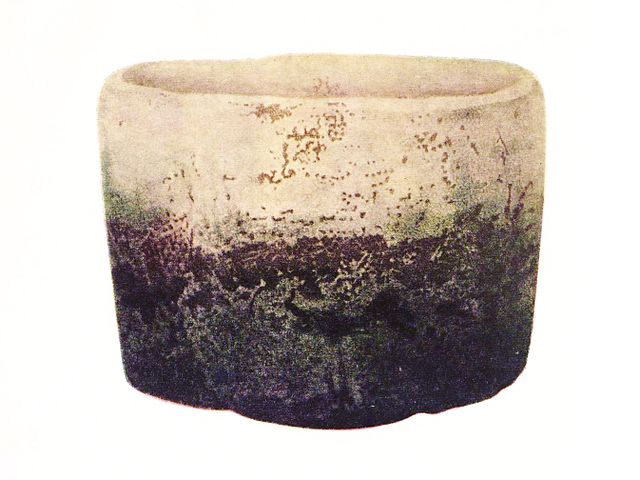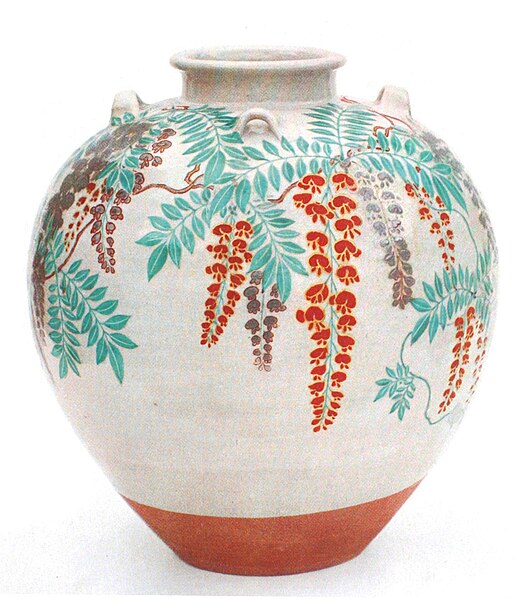Tokoname ware is a type of Japanese pottery, stoneware, and ceramics produced in and around the municipality of Tokoname, Aichi, in central Japan. Tokoname was the location of one of the Six Ancient Kilns of Japan.
Natural glaze ware jar, excavated at Ise, Mie, Heian period, 12th century
Coil-built stoneware with ash glaze. Kamakura period, 14th century
The Tōei kiln, largest climbing kiln (nobori-gama) in Japan
Kyūsu tea pot, Taishō era ca. 1921–1925, by Yamada Jōzan I
Japanese pottery and porcelain
Pottery and porcelain is one of the oldest Japanese crafts and art forms, dating back to the Neolithic period. Kilns have produced earthenware, pottery, stoneware, glazed pottery, glazed stoneware, porcelain, and blue-and-white ware. Japan has an exceptionally long and successful history of ceramic production. Earthenwares were made as early as the Jōmon period, giving Japan one of the oldest ceramic traditions in the world. Japan is further distinguished by the unusual esteem that ceramics hold within its artistic tradition, owing to the enduring popularity of the tea ceremony.
"Fujisan" white Raku ware tea bowl (chawan) by Hon'ami Kōetsu, Edo period (National Treasure)
Tea-leaf jar with a design of wisteria by Nonomura Ninsei, Edo period (National Treasure)
Jōmon pottery flame-style (火焔土器, kaen doki) vessel, 3000–2000 BC, attributed provenance Umataka, Nagaoka, Niigata
Haniwa warrior in keiko armor, Kofun period, 6th century (National Treasure)








